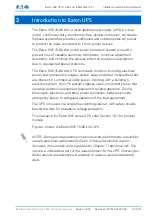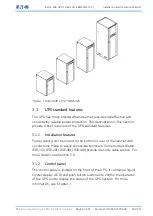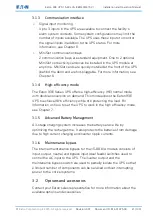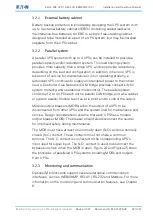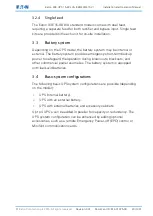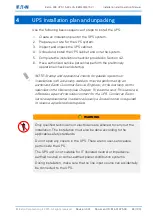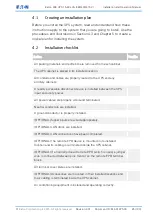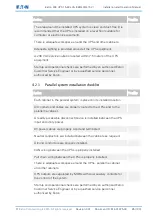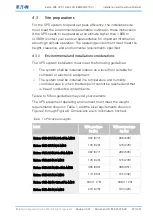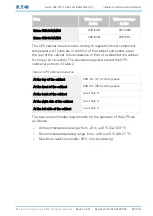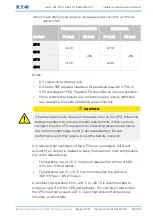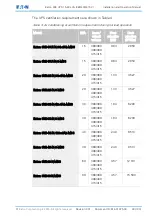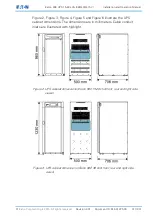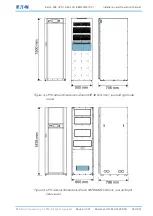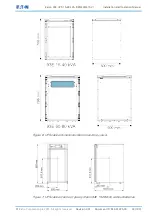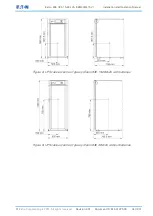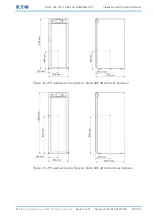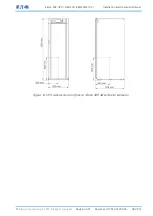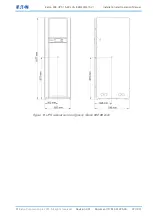
Eaton 93E UPS 15-80 kVA (380/400/415 V)
Installation and Operation Manual
© Eaton Corporation plc 2015. All rights reserved.
Revision: 001
Document ID: 614-01975-00
22 (133)
3.2.1
External battery cabinet
Battery backup protection is provided by equipping the UPS system with
up to 4 external battery cabinets (EBCs) containing sealed lead-acid,
maintenance-free batteries. An EBC is a single, free-standing cabinet
designed to be installed as a part of a UPS system, but may be installed
separate from the UPS cabinet.
3.2.2
Parallel system
A parallel UPS system with up to 4 UPSs can be installed to provide a
parallel capacity and/or redundant system. This load sharing system
provides more capacity than a single UPS, and can provide redundancy,
depending on the load and configuration. In addition, when one UPS is
taken out of service for maintenance or is not operating properly, a
redundant UPS continues to supply uninterrupted power to the critical
load. A Controller Area Network (CAN) bridge provides connectivity for
system metering and operational mode control. The parallel system
consists of 2 to 4 UPSs each with a parallel CAN bridge, and a tie cabinet
or system parallel module to act as a tie point and to control the output.
Module output breakers (MOBs) allow the output of a UPS to be
disconnected from other UPSs and the system load for maintenance and
service. Design considerations assume that each UPS has a module
output breaker (MOB). The breaker should also disconnect the neutral
for improved safety during maintenance.
The MOB must have at least one normally open (N.O.) and one normally
closed (N.C.) contact. These contacts must not share a common
terminal. The N.C. contact is connected to the corresponding UPS’s
input used for signal input. The N.O. contact is used to disconnect the
bypass pull-chain when the MOB is open. Figure 24 and Figure 25 show
the principles of paralleled UPS systems including MOBs and outputs
from UPSs.
3.2.3
Monitoring and communication
Optional MiniSlot cards support several alternative communication
interfaces, such as WEB/SNMP, RELAY / RS-232 and Modbus. For more
information on the monitoring and communication features, see Chapter
8.












